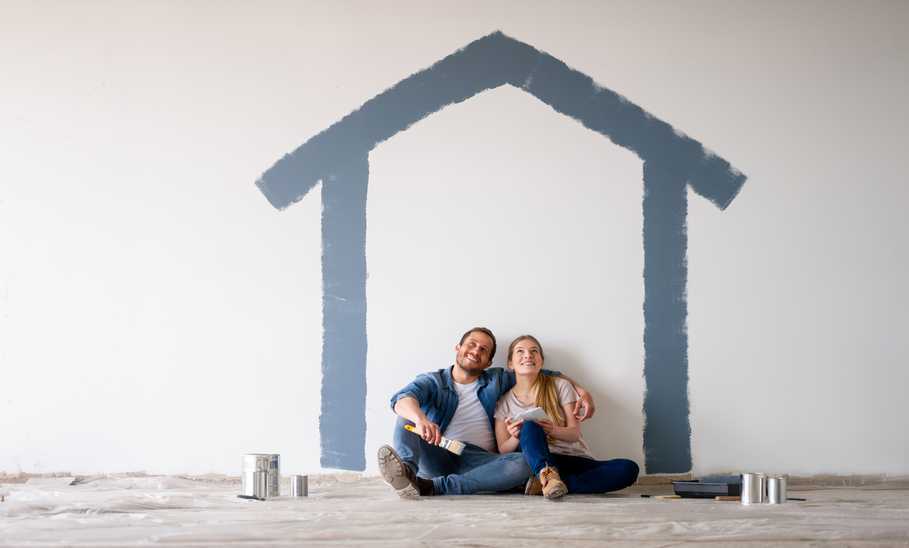Homeowners Insurance: What Is It, How It Works

Our evaluations and opinions are not influenced by our advertising relationships, but we may earn a commission from our partners’ links. This content is created by TIME Stamped, under TIME’s direction and produced in accordance with TIME’s editorial guidelines and overseen by TIME’s editorial staff. Learn more about it.
Homeowners insurance can help you pay for repairs and damage to your home's structure and replace your personal belongings in the event of a covered loss. Common losses covered by homeowners insurance include fire, hail, hurricane damage, lightning, theft, and vandalism.
Homeowners insurance also often includes certain liability coverage, which can help you pay for legal fees if someone is injured or sustains property damage at the hands of you or your family.
There are many important exceptions and other considerations when shopping for homeowners insurance. Our all-inclusive guide covers everything you need to know.
Like most other forms of insurance, policyholders pay a premium, usually monthly or annually, towards their homeowner's policy. The policy provides pre-agreed amounts of coverage that the insurance company will pay out in the event of a covered loss—minus any deductible that might apply. A deductible is the amount you pay out of pocket before insurance coverage kicks in.
Say, for example, you have an Allstate Home Insurance policy. The amount of your monthly premium will depend on a wide range of specifics including the size, age, location, and repair level of your home, along with the level of coverage and the size of the deductibles you choose.
Let's say your policy costs $146 per month, which is about the average in the U.S. per data from Policygenius. Your plan covers the physical structure of your home up to $300,000, as well as up to $300,000 in liability coverage, with a $1,000 deductible. This is reassuring because a big storm just rolled through your town and a tree fell on your home.
You file a claim, which Allstate would verify before paying out—minus your $1,000 deductible. Let’s say the total damage costs $50,000 to repair. Instead of being out $50,000, you’re only out $1,000, while Allstate covers the other $49,000.
In short, homeowners insurance gives you peace of mind for life’s unexpected accidents. While coverage is not legally mandated in any state, most mortgage lenders do require it.
Let’s take a closer look at the specifics.
There are eight types of homeowners insurance policies in total, creatively named HO-1, HO-2, HO-3, all the way up through HO-8.
HO-1 is known as “basic form” homeowners insurance and offers the most limited coverage. HO-5 is the most comprehensive form of coverage for most homeowners (and, indeed, is known as “comprehensive form” coverage). Policies HO-6, HO-7, and HO-8 are designed for condominiums, mobile homes, and vintage or historic homes, respectively. While we’re at it, HO-4 is another policy type you probably won’t need as a homeowner—it’s also known as renters insurance.
The most common type of homeowners insurance is HO-3, but we’ll look more closely at the four types most likely to apply to you as a homeowner.
As we said, HO-1 is the most limited form of homeowners insurance coverage available. In fact, it can be difficult to even find such a policy for sale today. It covers dwelling and property damage due to 10 specifically named perils up to the actual cash value of your home or belongings. Most other policies offer dwelling coverage up to the replacement cost, which is helpful when you’re trying to, well, replace it.
The 10 named perils are:
An HO-1 plan typically doesn't offer any liability coverage, and most lenders won’t accept it as a viable form of homeowners insurance.
Broad form homeowners insurance covers more than an HO-1 policy but less than the standard HO-3 plan. Still, HO-2 plans are a bit more common than HO-1s and may be available from your insurer.
This form of homeowners insurance covers the physical structure of your home up to its replacement cost value, including unattached structures, as well as your personal property, liability and related medical payments, and additional living expenses (also known as ALE) if you should need to temporarily relocate while your home is being repaired.
Along with the 10 named perils above, broad form homeowners insurance also covers:
Despite its “special” name, HO-3 coverage is considered standard nowadays and is the most common type of homeowners insurance. Like HO-2 coverage, special form policies cover physical structures both attached to and detached from your home at their replacement value, as well as your personal property at cash value, medical and liability coverage, and ALE.
However, unlike HO-1 and HO-2, your coverage isn’t limited by a list of named perils. Instead, you’re covered for everything except specific excluded perils that are listed in your policy. This is also known as “all-risks” coverage.
While you’re covered from all 16 of the perils already mentioned, in an HO-3 policy, the following perils are likely excluded:
Skipping HO-4—which, again, is the same as renters insurance and does not cover the physical structure of a home—we arrive at HO-5.
Comprehensive form homeowners insurance is the highest level of coverage available for most single-family homes. These plans are pricier and are usually only purchased if your property or belongings are particularly valuable. (Many insurance providers, including Allstate, Kin, Liberty Mutual, and Farmers don’t even offer this type of plan, defaulting instead to the more common HO-3 option.)
Here are the main differences between HO-5 and HO-3 plans:
As you can see, what’s covered depends on the type of policy you get. For most homeowners, HO-3 coverage is the best choice. These plans cover:
Of course, the only way to know for sure exactly what is covered by your policy is to read it—which we recommend you do, in full, prior to purchasing.
You have some level of control when it comes to how much homeowners insurance coverage to buy—though, again, your mortgage lender may have certain minimum requirements. Chances are you won’t be able to get away with an HO-1 policy, for example.
Here are some of the choices you’ll need to make when determining your homeowner insurance coverage.
While HO-3 policies are standard and the most common, they’re not the only option on the market. Sometimes, another type of policy may make more sense for you.
Like any other type of insurance policy, you can choose your deductible amount. Generally, the lower the deductible, the higher your monthly premium. However, you'll be on the hook for less money if a loss or damage occurs.
While higher coverage amounts come with higher premiums, you’ll have more peace of mind in the event of a catastrophic loss. You may also be able to purchase additional coverage for valuable belongings or upgrade to replacement-cost coverage of personal property rather than cash-value coverage.
Remember that, in the event of a loss, an appraiser or insurance adjuster will likely decide the replacement cost of various home structures.
You may also be able to customize how much liability and medical payment coverage your policy carries.
Most standard homeowners insurance policies list common perils that are not covered. However, you may be able to purchase additional coverage for added peace of mind.
Examples include:
According to Policygenius, the average cost of an HO-3 homeowners insurance plan is about $1,754 per year. This is for a plan offering $300,000 of dwelling coverage and $300,000 of liability coverage with a $1,000 deductible to a 40-year-old homeowner.
Your specific costs will vary based on where your home is located, how old it is, its level of repair, and many other factors—even the age of you, the homeowner.
Other factors that will play into the calculation include:
Insurance companies factor in all of these considerations (and more) when they assess the risk level of a potential client, so averages can only get you so far when it comes to predicting what you might pay for homeowners insurance.
There is a simple rule of thumb that can help you calculate how much homeowners insurance is adequate. Simply multiply the square footage of your home by the average per-square-foot building cost in your area. The latter number can change drastically depending on where you are and what the local labor costs, along with the dynamic price of materials.
If you’re not sure where to find the local building costs, contact your real estate agent, builders association, or insurance agent. They can also help you determine how much personal property and liability coverage is right for you and your family.
Trying to keep your homeowners insurance costs low? Here are some ways to lower your monthly premium.
If you’d rather pay more out of pocket in an unlikely emergency in order to lower your monthly premium, consider opting for a higher deductible. Remember that while this will lower your premium payments, it won’t be worth it if you can’t afford the deductible when the time comes.
Again, the less coverage you buy, the less expensive your policy will be. You’ll also have less coverage, which may come back to bite you in the event of an emergency. That said, striking a balance can make your policy more affordable.
Home upgrades can drive down the cost of your insurance policy if they make your home sounder and safer. The only caveat is that if the value of your home increases substantially, your costs might increase some, too.
Even $10 a month can add up over the course of a 30-year mortgage, so it’s worth shopping around for the best possible insurance provider from the start. Most insurers will offer quotes if you answer just a few questions. The time you spend today could add up to big financial savings in the long run.
While it can seem overwhelming at first, homeowners insurance is actually a fairly simple product. Like most types of insurance, you buy it because you want it to be there when you need it. Hopefully, you won’t need it very often, if ever.
The claims process varies by insurer, but most companies make it easy to file a claim online. You’ll sign into your account and fill out the required information. You’ll likely need to upload photo or video evidence of damages and losses. Your insurance company will contact you to tell you what steps to take next.
Although documenting every single item you own might sound like a big pain (and be one), doing so can help you more accurately determine how much your personal property is actually worth. This can help you attain the right level of personal property coverage from your insurer.
The insurance company may also ask you to create an inventory in the event of a major loss, like a fire, so they can determine the cash or replacement value of those items. Chances are you’ll have enough on your plate when an emergency happens, so it may be worthwhile to make the effort sooner rather than later.
The 80% rule states that you must insure your home for at least 80% of its total replacement cost, lest you be penalized for being underinsured. For instance, if your home is worth $300,000, you should have at least $240,000 worth of insurance coverage for the dwelling structure. Keep in mind that these figures can change as you make improvements and renovations to your home.
Homeowners insurance can cover the physical structure of your dwelling and your personal belongings at three levels:
Guaranteed/extended replacement cost: This is the highest level of protection, covering additional labor or material costs even if they exceed your policy’s stated limits. As the name suggests, this level of coverage may either extend the limits, usually by 10% to 25%, or guarantee that your covered structures will be replaced to their state before the loss regardless of price.
The information presented here is created by TIME Stamped and overseen by TIME editorial staff. To learn more, see our About Us page.



